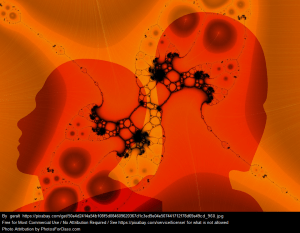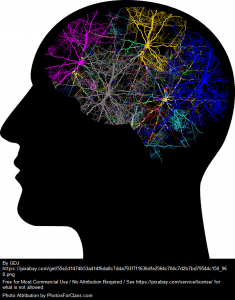The Mind’s Mirror: Blog Post due 4/2/2020 (References are at the end too)
AHS 155 Stress and Health
Annabel Edelman
Mirror neurons work within the human brain to help us learn via observation. They mimic the experiences of those we observe within our own brain, very similarly to us having had their experience firsthand. This type of learning is “Intentional Understanding”(Rizzolatti, G. , Sinigaglia, C. (2007) Mirror Neurons and Motor Intentionality. Functioning Neurology; 22(4): 205-210. Retrieved from https://pdfs.semanticscholar.org/fbe6/5839ff5319065b43f3b61329cb90352d8791.pdf) ( which not only covers the actual thing that is being done, but the reason(s) or motivations why. Therefore, we are in the fashion forced to take into account the perspective(s) of those we perceive, and experience a secondhand version of this via mirror neurons.
Empathy is defined by Merriam-Webster as “the act of understanding, being aware of, sensate to, and vicariously experiencing the feelings, thoughts, and experiences of another of either the past or present without having the feelings, thoughts, and experience fully communicated in an objectively explicit manner— also: the capacity for this” . In this regard, mirror neurons may be thought of as the physical source our emotional investment in the lives of those around us, on top of helping us learn how to complete tasks via observation. It puts us “in the shoes” of those we observe and interact with so that we may better understand perspectives other than our own singular point in space and time.
As we learned in class, oxytocin is a neuropeptide produced by the human brain, created for a number of reasons and here, notably, during times of stress. Among its benefits, it causes us to seek out support and companionship of others, which in turn prompts production of even more oxytocin. This chemical literally helps heal the human heart, and increases our resilience to stress and capacity for recovery from stress.
Oxytocin suppresses cortisol, one if the main stress chemicals, and causes us to bond more with others on an emotional level. It promotes growth, increases our tolerance to physical pain, and lowers blood pressure. In this way it heals our hearts and minds both chemically and psychologically.
References:
Rizzolatti, G. , Sinigaglia, C. (2007) Mirror Neurons and Motor Intentionality. Functioning Neurology; 22(4): 205-210. Retrieved from https://pdfs.semanticscholar.org/fbe6/5839ff5319065b43f3b61329cb90352d8791.pdf
Acharya, S., Shukls, S. (2012 July-December) Mirror Neurons: Enigma of the Metaphysical Modular Brain. Retrieved from https://www.ncbi.nlm.nih.gov/pmc/articles/PMC3510904/
“empathy” Merriam-Webster.com. 2020. https://www.merriam-webster.com/dictionary/empathy?utm_campaign=sd&utm_medium=serp&utm_source=jsonld (3/29/2020)
Uvnas-Mober K, Petersson M (2005) Oxytocin, a Mediator of Anti-stress, Well-being, Social Interaction, Growth and Healing
Heinrichs M, Baumgartner T, Kirschbaum C, Ehlert U (2003 February-October) Social Support and Oxytocin Interact to Suppress Cortisol and Subjective Responses to Psychosocial Stress , Retrieved from https://www.soz.psy.unibe.ch/ueber_uns/personen/baumgartner_thomas/e66124/files66139/Heinrichs_Baumgartner_BiologicalPsychiatry_2003.pdf







